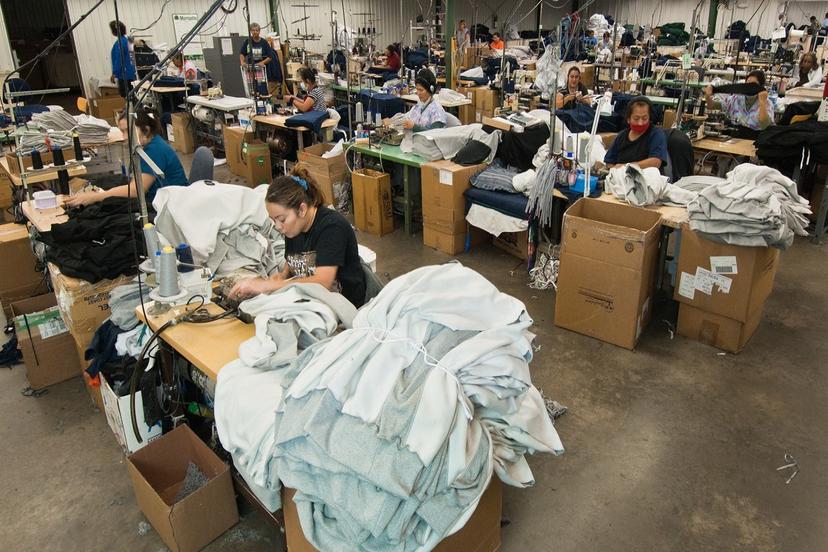Textiles

Structure
The textile industry has three key categories—research and development, production, and merchandising—with production employing the largest number of workers, who staff factories and manufacture all fabrics and textile products.
Research and development scientists create new synthetic materials, experiment with dyes and weaves, test fiber strength, and develop computerized equipment. Textile science facilities often include laboratories for product testing for qualities such as strength, durability, and soil resistance. Technicians usually conduct the testing, with scientists supervising the operation.
While the research and development departments refine the process of textile production, stylists and fabric designers generate fabric designs. The textile industry offers careers in styling and design for creative people with a love of color and artistic talent. More and more design work is being done by computer. Computer-aided design (CAD) and computer-aided manufacturing (CAM) technicians use computer-controlled systems to create the diagrams and drawings required for textile manufacturing
Once a design is approved, the textile is ready to be manufactured. The first step is to purchase the material needed to produce the fabric. Textile firms divide purchasing into two categories: raw fiber and general purchasing. Raw fiber procurement is a highly specialized field and requires knowledge of fabrics, market prices, market demand for various textiles, and other topics. General purchasing includes everything from office supplies to large machinery.
With the materials procured, the production of the fabric begins. Textile plant operations include many processes: opening bales of fibers, cleaning the fibers, carding them so that the strands lie parallel, twisting and roving the fibers, spinning the fibers into yarn, weaving or knitting the yarn into fabric, fusing or bonding fibers with a cementing medium, and chemically finishing the fabric. Each of these steps requires special machinery.
Most fabrics are produced by weaving or knitting. Woven materials are made from two sets of yarns. One set of yarn (called the warp) is threaded lengthwise through a series of frames. During the manufacturing process, some of the warp yarn is raised and some is lowered. This creates a space through which the other set of yarn (called the filling or weft) is pulled to form the crosswise pattern. Various patterns are formed depending on the amount and type of spacing between the warp and filling.
Knitted materials can be made either from a single yarn or a set of yarns. A knitting machine with automatic needles is used to make loops in the yarn and join the loops together, thereby producing cloth.
Textile plants have many kinds of machines doing different kinds of jobs. Materials flow constantly between departments in plants that operate around the clock. The machines are complicated and must be handled with skill by operators who control them and correct malfunctions, often without supervision.
Color and pattern are important features of many textile products. Computers are often used in the formulation of dyes and matching of colors to ensure uniform quality, but expert dyers supervise the adding of color to yarn or fabric. Die-range operators control the dyeing machines, in which widths of cloth are spread on a dye pad and then dried.
After textile products are woven, knitted, or bonded, they are treated to give them special properties. This operation is known as finishing. Finishing processes are chemically based and enable fabric to resist shrinkage, repel soil, resist burning, or hold its shape.
Manufactured textiles are purchased by apparel makers and other producers of textile products. The fabrics are measured, marked, cut, sewn, formed, finished, inspected, and shipped to customers.
To satisfy the ever-changing needs, tastes, and values of consumers, the textile industry employs workers to take on the challenging and extremely competitive task of merchandising: the business of selling fabric and consumer products. Marketing workers help determine which products will meet consumers' needs and work with store managers, garment makers, and clothing designers to produce and distribute high-quality products.
Advertising and sales promotion workers must create demand for textile products with a variety of communications tools. Methods used include television advertisements and ads in consumer and trade magazines. Other promotional activities include point-of-sale displays, attractive packaging, exhibits at fashion shows, and promotions within department stores.
Another textile-related field involves textile conservation. Textile conservators restore and repair damaged historical or valuable textiles using highly technical methods. The most common problems are due to the normal wear and tear of fabrics. Some of the textiles are found buried, which leads to even further disintegration. Some basic tasks of conservators include analyzing dyes, identifying fibers through microscopy, documenting fabric construction, assessing the proper construction of exhibition mounts, determining methods of storage, and repairing damaged textiles.
Roughly half of the conservators are employed by museums, while the remaining conservators have private practices, where they assist the general public and smaller museums that have no conservation labs. Conservators use X-ray machines, scanning electron microprobes, and microscopes to locate problems and analyze the fibers.
